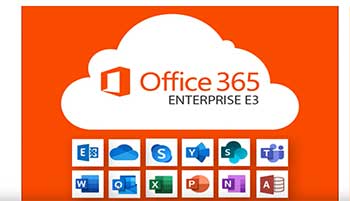Microsoft Office 365 offers different subscription plans based on the size and needs of an organization. Two popular options for small to midsize businesses are E2 and E3.
This article provides an in-depth comparison of key features and differences between Office 365 E2 and E3 to help you choose the right plan.
Brief Comparison Table
| Feature | E2 | E3 |
| Price per user/month | $4 | $20 |
| Online versions of Office apps | Yes | Yes |
| Desktop versions of Office apps | No | Yes |
| Email and Calendaring | 50 GB limit | Unlimited |
| Online Meetings | Yes | Yes |
| Audio Conferencing | No | Yes |
| File Storage | 1 TB per user | Unlimited |
| Advanced Email Management | No | Yes |
| Advanced Security | No | Yes |
Overview Of Office 365 E2
Office 365 E2, previously known as Plan E2 or Business Essentials, is designed for businesses that need email, file sharing, and basic online collaboration capabilities.
With E2, you get web and mobile access to Outlook, Word, Excel, and PowerPoint. However, there are no desktop versions of the Office apps included. You do get 50GB mailboxes and 1TB of OneDrive storage per user.

E2 includes online meetings, instant messaging, and video conferencing through Skype for Business. But it lacks audio conferencing capabilities.
On the admin side, E2 provides user and password management, along with basic device management and integration with Active Directory. But you don’t get advanced security, compliance, or analytics features.
Overall, E2 works well for small teams that need core online collaboration tools without advanced functionality like desktop Office apps, unlimited storage, and enterprise-grade security protections.
Overview Of Office 365 E3
Office 365 E3, previously known as Enterprise E3, contains all the features of E2 plus a lot more. It’s designed for midsize to large organizations that need robust collaboration capabilities and advanced security.
With E3, users get the full desktop versions of Office apps – Outlook, Word, Excel, PowerPoint, Publisher, and Access. You also get unlimited email storage and unlimited OneDrive cloud storage per user.

For online meetings and calling, E3 includes Skype for Business with audio conferencing to host large meetings with toll-free numbers.
On the admin side, E3 has advanced security controls like Exchange Online Protection and Azure Active Directory Premium features. You can set data loss prevention policies, enable multi-factor authentication, and get advanced identity management.
E3 also provides analytics through the MyAnalytics and Workplace Analytics services. This allows tracking usage and collaboration patterns to optimize productivity.
Overall, E3 is ideal for midsize businesses that need robust collaboration tools along with advanced security, compliance, and analytics capabilities.
Key Feature Comparison
Let’s dive deeper into the key differences between Office 365 E2 and E3 plans:
Desktop Office Apps
E2 only provides web-based access to Office apps like Word, Excel, and PowerPoint. There are no desktop versions included.
E3 gives you full, installed versions of Office apps for Windows and Mac. This allows working offline and access to the full range of Office features.
Email Limits
E2 comes with 50GB mailboxes per user and send/receive limits of 10,000 emails per day. This may be insufficient for some users.
E3 offers unlimited email storage space and no send/receive restrictions. This works better for larger organizations.
Online Meetings
Both E2 and E3 plans include Skype for Business for instant messaging, screen sharing, and basic video conferencing.
But only E3 has advanced audio conferencing capabilities through Skype to host large meetings with toll-free numbers.
Storage Space
E2 provides 1TB of OneDrive cloud storage per user. This may limit storage of large files and archives.
E3 comes with unlimited OneDrive space so users can store as many files as needed.
Security and Compliance
E2 only has basic security through Office 365 Advanced Threat Protection.
E3 adds advanced features like Exchange Online Protection, Azure Active Directory Premium, Data Loss Prevention, and more. This provides robust protection against threats.
Analytics
E2 has no analytics capabilities.
E3 includes MyAnalytics for user productivity insights and Workplace Analytics for organization-level analytics. This allows optimizing collaboration and workflows.
Archiving
E2 has no archiving functionality. Emails and files must be stored within the limited storage space.
E3 adds unlimited archiving through Exchange Online Archiving. This allows preserving emails and files for compliance needs.
Support
E2 comes with web and community support. To get guaranteed response times, you need to purchase a separate Support Add-on plan.
E3 plans include technical support through phone and online channels with guaranteed response times based on severity.
Also Read: Comparison Between Monday.com And Microsoft Teams.
Pricing Comparison
Office 365 E2 costs $4 per user/month when paid annually. There are no options to add desktop apps or additional storage.
Office 365 E3 costs $20 per user/month. There are also E3 without Audio Conferencing ($18 user/month) and E3 without desktop Office apps ($16 user/month) plans to fit specific needs.
Volume licensing discounts can further reduce effective pricing for large deployments.
Overall, E3 provides significantly more features and capabilities for about 5 times the cost of E2. The higher pricing may still be justified for midsize businesses based on advanced functionality.
Use Case Examples
Here are some examples of when Office 365 E2 or E3 may be more suitable depending on business needs:
- Small startup with limited budget – E2 for basic email and collaboration.
- Medium business needing full desktop Office apps – E3 for installed Office suite.
- Remote or mobile workers needing offline access – E3 for desktop apps access offline.
- Organization with high email volumes – E3 for unlimited mailbox storage.
- Company dealing with sensitive data – E3 for advanced security and compliance.
- Distributed teams holding large video meetings – E3 for conferencing capabilities.
- Business needing analytics insights – E3 for MyAnalytics and Workplace Analytics.
FAQs
E1 is the most basic plan with webmail, online storage and Office web apps.
E2 adds desktop Office suite, more security, and analytics.
E3 builds further with unlimited storage, archiving, desktop OneNote, and audio conferencing.
No, Office 365 E2 continues to be an active subscription option. Microsoft rebranded it from Plan E2 to Office 365 E2, but the plan and features remain unchanged.
An Office 365 E2 license provides a user with web access to Office apps, 50GB mailbox, 1TB OneDrive storage, and online meetings via Skype for Business. It does not include the desktop Office suite.
You can check your Office 365 account portal and look at the plan name – it will be listed as Office 365 E1, Office 365 E3, or other variants. You can also look at enabled features – E3 will show desktop Office apps, unlimited storage, etc.
Also Read: Differences Between Apigee And IBM API Connect.
Conclusion
Office 365 E2 and E3 cater to different business needs. E2 provides a cost-effective option for basic email, cloud storage, and online collaboration. E3 adds significant capabilities around desktop Office apps, security, compliance, conferencing, and analytics.
Midsize companies should evaluate their specific requirements around offline Office access, storage space, security protections, and advanced functionality when choosing between E2 and E3. While E3 costs more upfront, the expanded capabilities often justify the higher investment for growing organizations.